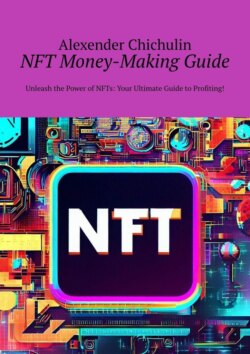Читать книгу NFT money-making guide. Unleash the power of NFTs: your ultimate guide to profiting! - - Страница 6
Chapter 1: Understanding NFTs
Exploring the blockchain technology behind NFTs
ОглавлениеBlockchain technology serves as the foundational infrastructure for NFTs, providing transparency, security, and decentralization. Let’s delve deeper into the key aspects of blockchain technology that power NFTs:
Decentralization:
Blockchain operates on a decentralized network of computers known as nodes. Unlike traditional centralized systems where data is stored in a single location, blockchain distributes data across multiple nodes. This decentralized nature ensures that no single entity has complete control over the network, making it resistant to censorship and tampering.
Transparency:
Blockchain offers transparency by providing a public and immutable ledger of transactions. Each transaction and ownership transfer involving NFTs is recorded on the blockchain, creating a transparent and auditable history. This transparency helps establish the provenance and authenticity of digital assets, giving confidence to buyers and sellers.
Consensus Mechanisms:
Blockchain networks employ consensus mechanisms to validate and agree upon the state of the blockchain. The most widely used consensus mechanism in NFT ecosystems is Proof of Work (PoW) or Proof of Stake (PoS). These mechanisms ensure that participants on the network agree on the validity of transactions and maintain the integrity of the blockchain.
Smart Contracts:
Smart contracts are self-executing agreements written in code that automate and enforce the terms and conditions of transactions. NFTs utilize smart contracts to define the properties, functionalities, and transferability rules of the tokens. Smart contracts enable NFT creators to specify royalties, define ownership rights, and include other programmable functionalities within the tokens themselves.
Token Standards:
Token standards, such as ERC-721 and ERC-1155, define the rules and standards for creating NFTs on specific blockchain platforms. These standards outline the required functionalities, such as ownership, transferability, and metadata storage, ensuring compatibility and interoperability among different NFTs and platforms.
Interoperability and Portability:
While NFTs are predominantly associated with specific blockchain platforms, efforts are underway to enable interoperability and portability of NFTs across different chains. Initiatives like cross-chain bridges and standards like ERC-998 and ERC-1155 aim to facilitate the movement of NFTs between different blockchain ecosystems, expanding their reach and utility.
Scalability and Gas Fees:
Blockchain scalability and gas fees are essential considerations in the NFT space. Scalability refers to a blockchain’s capacity to handle a large number of transactions without compromising speed and cost-effectiveness. Gas fees represent the transaction costs associated with executing operations on the blockchain. High demand for NFTs can lead to increased gas fees and congestion on certain blockchain networks.
In summary, blockchain technology provides the underlying infrastructure for NFTs, enabling decentralization, transparency, and the execution of smart contracts. It ensures the authenticity, ownership, and transferability of digital assets by leveraging consensus mechanisms, smart contracts, and token standards. As the technology continues to evolve, efforts are being made to enhance scalability, interoperability, and usability within the NFT ecosystem.
